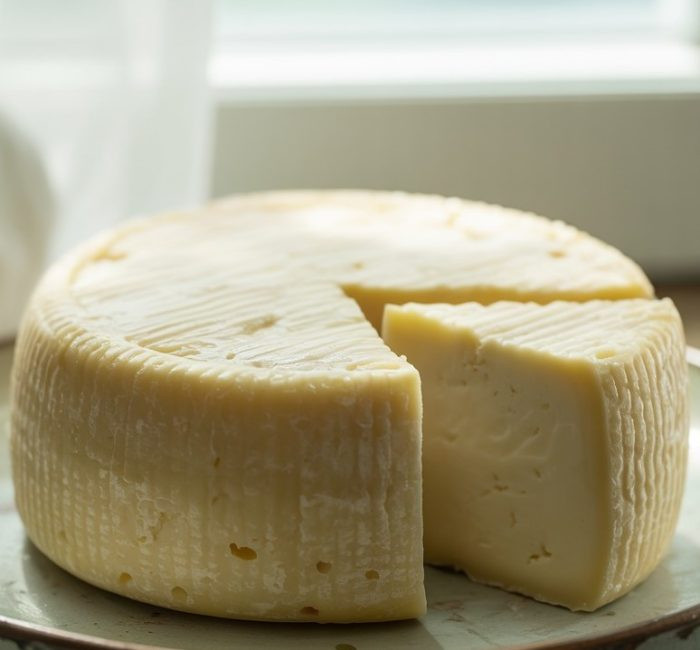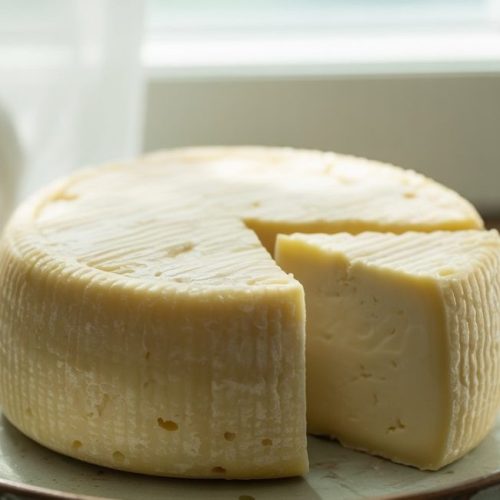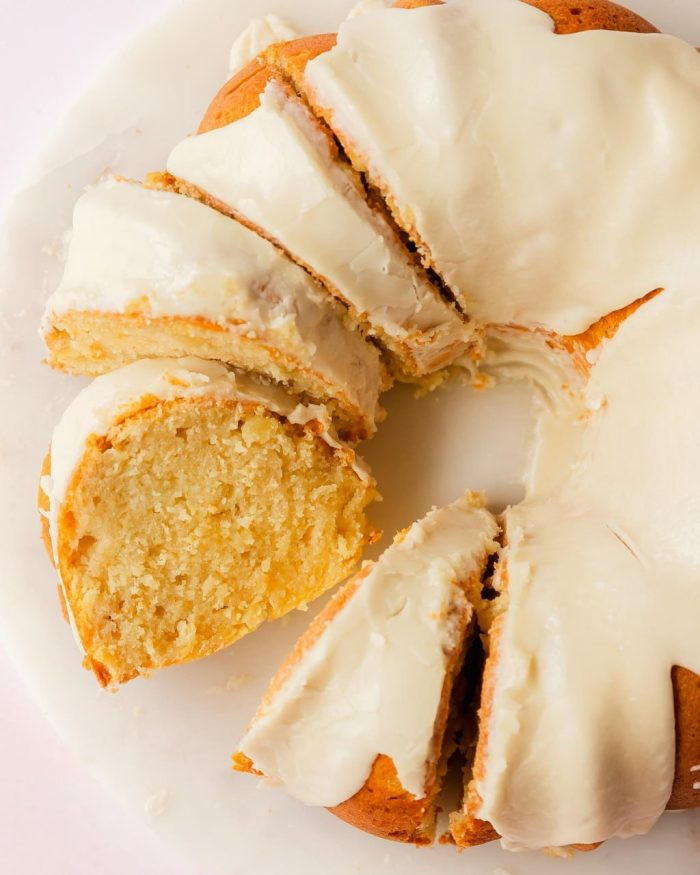The last time my parents visited, my mom brought along an old, handwritten recipe from my grandmother’s kitchen—a soft cheese she used to make when they lived on the farm. It was barely a page long, scribbled with notes in the margins, and yellowed at the edges.
We were all sitting around the kitchen table, my kids eagerly listening to my mom recount stories of collecting warm milk at dawn, while my dad nodded along, clearly remembering more than he let on. My daughter asked if we could try making it, and before long, we were pouring fresh milk into a pot and stirring gently.
We didn’t have any fancy equipment—just a cheesecloth, a colander, and a bit of patience. The kids took turns squeezing the curds, and my son proudly declared it looked like “clouds you can eat.” That afternoon turned into a slow, comforting sort of day. We ate the cheese warm with fresh bread from the corner bakery and cherry tomatoes from our little backyard garden. Even my teenage nephew, who rarely says much, admitted it tasted “real.” I shared a container with our elderly neighbor across the street, and she smiled like I’d handed her a box of memories.
It wasn’t just about making cheese. It was a day layered with family, memory, and something quietly satisfying. Somehow, that soft cheese managed to bring all of us just a little closer.

Short Description
This easy homemade fresh cheese recipe transforms simple pantry staples into a creamy, tangy, and versatile spread. With just milk, lemon juice, and salt, you’ll create delicious cheese perfect for toast, pasta, or snacking—no fancy equipment or experience needed.
Key Ingredients
- 4 cups (1 liter) whole milk
- 2 tablespoons lemon juice or white vinegar
- ½ teaspoon salt
- 10g (2 teaspoons) butter (optional, for added creaminess)
- Optional flavor add-ins: garlic powder, chopped chives, cracked black pepper, smoked paprika
Tools Needed
- Large saucepan
- Food thermometer (optional but helpful)
- Cheesecloth or clean kitchen towel
- Colander
- Mixing bowl
- Wooden spoon or spatula
Cooking Instructions
Step 1: Heat the Milk
Pour the whole milk into a large saucepan and set it over medium heat. Stir occasionally to prevent the milk from scorching at the bottom. Heat the milk until it reaches 85°C (185°F)—just below boiling.
If you don’t have a thermometer, watch for small bubbles around the edges and a light steam rising.
Step 2: Add Lemon Juice or Vinegar
Remove the pan from heat once it reaches the correct temperature. Stir in the lemon juice or vinegar slowly, and watch the milk curdle before your eyes.
Step 3: Let It Sit
Gently stir the curdled milk for just a few seconds to help the acid distribute evenly. Then cover the pot and let it sit undisturbed for 10 to 15 minutes. This resting time allows the curds to fully form and firm up.
Step 4: Drain the Curds
Line a colander with cheesecloth or a clean kitchen towel and place it over a bowl or sink. Slowly pour the curds and whey into the colander.
Let the curds drain for 30 minutes for a soft, spreadable cheese. If you want a firmer cheese, let it drain up to an hour. For a very creamy texture, don’t press down—just let gravity do the work.
Step 5: Season and Mix
Transfer the drained curds to a clean bowl. Add the salt and butter, if using, and stir until smooth and well-combined. This is also where you can mix in any flavorings—fresh chives, minced garlic, crushed pepper, or your favorite herbs.
Step 6: Shape and Chill
For a soft cheese, simply store it in an airtight container in the fridge. For firmer cheese, wrap the curds in cheesecloth and gently squeeze out any remaining whey. Shape it into a small log or ball, wrap in cling film, and refrigerate for 2–3 hours until firm.
Why You’ll Love This Recipe
– Incredibly easy—only three base ingredients!
– Budget-friendly alternative to store-bought cheese
– Customizable with endless flavor combinations
– High in protein and free from preservatives
– Great introduction to cheesemaking for beginners
Mistakes to Avoid & Solutions
Curds won’t form? Your milk might not be hot enough. Ensure it reaches 85°C (185°F) before adding acid.
Used ultra-pasteurized milk? Unfortunately, it may not curdle well. Stick to regular whole milk for best results.
Pressed too much whey out? Your cheese may be dry. Add a little cream or more butter and mix gently.
Cheese too sour? You may have used too much acid. Stick to 2 tablespoons per liter and taste before adjusting.
Serving and Pairing Suggestions
– Serve on toasted sourdough or seeded crackers
– Use as a filling for omelets, savory crepes, or ravioli
– Pair with fresh fruit like figs, apples, or grapes for a quick appetizer
– Spread on bagels as a lighter cream cheese alternative
– Sprinkle with smoked paprika and drizzle with olive oil for a party dip
Storage and Reheating Tips
Store in an airtight container in the fridge for up to 5 days
For firmer cheese, wrap in wax paper or cling film
Freeze only if necessary (texture may change)—wrap tightly and store for up to 1 month
To soften refrigerated cheese, let it sit at room temperature for 10–15 minutes before serving
FAQs
1. Can I use plant-based milk to make this cheese?
Unfortunately, plant-based milks like almond or oat won’t curdle the same way. Stick to dairy milk for this recipe.
2. Can I use apple cider vinegar instead of lemon juice?
Yes! Apple cider vinegar works well and adds a subtle tangy flavor. Use the same amount as lemon juice.
3. How do I know when the curds are ready to drain?
Look for large, distinct curds separating from clear yellowish whey. If the liquid still looks milky, give it a few more minutes.
4. Can I make this cheese creamier?
Yes! Add a tablespoon of cream to the curds while mixing or blend it briefly for a whipped texture.
5. Is this cheese similar to ricotta or paneer?
Yes and no—it’s like ricotta in softness, but closer to paneer if you press and firm it. The flavor is fresh and neutral, perfect for seasoning.
Tips & Tricks
– Use whole milk for the richest flavor and best yield
– Save the leftover whey—it’s great in smoothies, soups, or bread dough
– For clean cheesecloth removal, dampen it slightly before using
– A sprinkle of flaky sea salt on top adds a gourmet touch
– For a Mediterranean twist, mix in chopped olives, sun-dried tomatoes, and oregano
Recipe Variations
1. Herbed Garlic Cheese
After draining the curds, mix in ½ tsp garlic powder, 1 tbsp finely chopped chives, and a dash of black pepper. Chill until set. Great with crackers or roasted veggies.
2. Smoky Paprika Log
Stir in ¼ tsp smoked paprika and roll the curds into a small log. Press cracked black pepper and fresh thyme onto the surface before chilling.
3. Honey & Sea Salt Spread
Leave the cheese soft, and blend in 1 tsp honey and a pinch of sea salt. Spread on warm toast or use in stuffed dates.
4. Lemon Zest & Basil
Add 1 tsp finely grated lemon zest and 1 tbsp chopped fresh basil to the curds for a bright, citrusy profile. Perfect for summer salads or crostini.
Final Thoughts
I still find myself thinking back to that afternoon. The way the house smelled faintly of milk and steam, the quiet hum of voices in the kitchen, and the shared task that somehow made time slow down. Making fresh cheese with my family turned into more than just a recipe—it became a kind of connection, a simple act that brought generations together.
Now and then, when the day feels especially hectic, I pull out that recipe card and make a small batch, just to remember. Not for the taste, but for the calm it brings. And maybe that’s what makes it so special—it reminds us how beautiful ordinary moments can be.

Homemade Fresh Cheese
Ingredients
- 4 cups 1 liter whole milk
- 2 tablespoons lemon juice or white vinegar
- ½ teaspoon salt
- 10 g 2 teaspoons butter (optional, for added creaminess)
- Optional flavor add-ins: garlic powder chopped chives, cracked black pepper, smoked paprika
Instructions
- Pour whole milk into a large saucepan and heat over medium, stirring occasionally. Warm it to 85°C (185°F), just below boiling.
- Remove from heat and slowly stir in lemon juice or vinegar. Watch as the milk begins to curdle.
- Give the mixture a gentle stir, then cover and let sit for 10–15 minutes to allow the curds to form.
- Line a colander with cheesecloth and place over a bowl or sink. Slowly pour in the curds and whey. Let it drain for 30 minutes for soft cheese, or up to 1 hour for firmer results. Do not press—just let gravity do the work.
- Transfer curds to a bowl. Add salt and butter (if using), and stir until smooth. Fold in optional mix-ins like herbs, garlic, or pepper.
- For soft cheese, store in an airtight container and refrigerate. For firmer cheese, wrap in cheesecloth, gently squeeze, shape into a log or ball, and chill for 2–3 hours.



